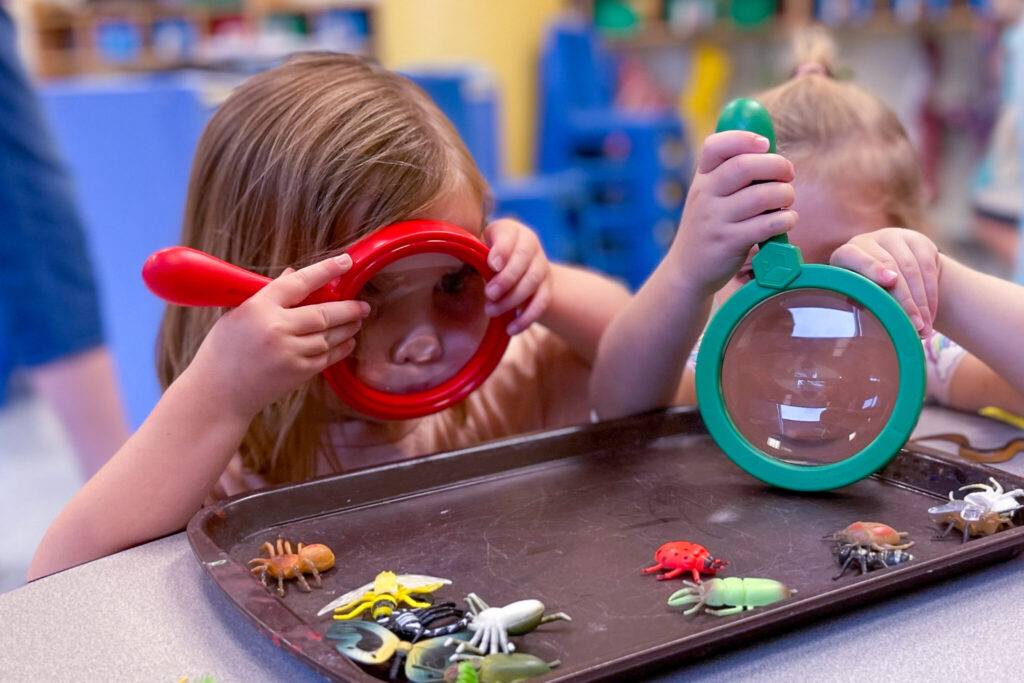Members of Congress unveiled a bipartisan plan on Tuesday, Jan. 16, 2024 that would again expand the child tax credit for families as well as provide business incentives. Shown are children at the Downtown Children’s Center in St. Louis. (Courtesy of Rebecca Rivas/Missouri Independent)
The Virginia Board of Education adopted new standards for licensed child care centers on Tuesday, ending the existing standards to enhance the safety of children receiving care.
The board voted 7-0.
However, after some providers aired concerns over the changes at the business meeting, the board on Thursday directed staff to create guidance for providers on screen time and other common issues raised through variance requests. The board also removed the requirement for providers to use only liquid soap in the proposed regulation since some children can only use bar soap because of sensory needs.
“Honestly, it just seems like an over-regulation to require child care centers to apply for a variance for something like just using a bar of soap,” said Board Member Meg Bryce, a Gov. Glenn Youngkin appointee. “I have a 3-and-a-half-year-old who can’t pump liquid soap, so I can see why this would be a pretty common issue in child care centers.”
The action ends a years-long process that began in December 2021 to protect children while also meeting state and federal laws, considering the cost and operational impact of regulations, and reducing any “burdensome” requirements, according to Virginia Department of Education (VDOE) staff. Public comments on the updated rule will still be accepted through the Early Childhood Advisory Committee.
The new regulation, dubbed Standards for Licensed Child Day Centers, is expected to help people more easily understand the standards and keep kids safer under state and federal laws.
The regulation describes to providers the health and safety requirements of operating a child care center and provides the standards to protect children under the age of 13, and also reduces risks and ensures the services and resources at the centers are “conducive to the well-being of children,” according to VDOE staff.
Data shows thousands of Virginians in need of child care services
In 2020, the Virginia General Assembly transferred oversight of early childhood care and education programs from the Board of Social Services to the Virginia Board of Education.
In addition, funding and oversight of early childhood programs and policies, including the Child Care Subsidy Program and child care licensing and monitoring, transitioned to the Virginia Department of Education from the Department of Social Services on July 1, 2021.
“From the beginning, we’ve tried since the shift to DOE to say our job is to partner with programs to keep kids healthy and safe,” said Jenna Conway, deputy superintendent at VDOE, adding that if any providers don’t understand the standards or need additional help the department will assist.
She continued that there is still more work to be done and it is essential that providers “believe in these regulations” so they can employ these practices “day in, day out” to prevent child care center fatalities in Virginia.
The regulation includes a state law requiring centers to have a stock of epinephrine on hand and to train staff on its administration. Another law requires centers to perform lead testing to ensure drinking water meets minimum standards.
Under the new regulation, the definition “school-age” was revised to clarify that the allowance for children 5 years of age by Sept. 30 to be considered school-age is not exclusive to school-age only groups.
Records must now also include a child’s dietary restrictions and any special accommodations needed, and centers must also inform the superintendent if a child is lost, missing or wandered away unattended from the facility.
The height requirement of climbing equipment installed outdoors after June 1, 2005, was reduced from seven feet to six for toddlers and preschool children. Indoor climbing equipment height requirement remains at five feet.
One of a handful of speakers requesting the board modify the proposed regulation on Thursday said the height requirement is unclear.
Other speakers urged the board to modify the regulation that calls for providers to increase the ratio of staff, which they feared would increase costs for centers. Speakers also pointed out that the proposed regulation has no restrictions on visual media screen time.
Conway said there are approximately 2,600 child care centers across the state.
GET THE MORNING HEADLINES.

